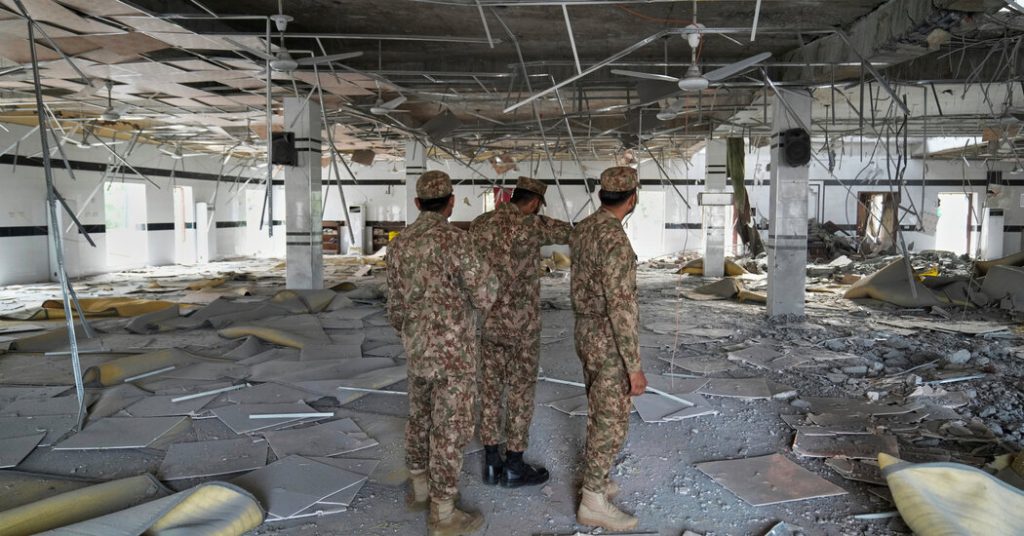The spark for the recent conflict between India and Pakistan was a terrorist attack on the Indian side of Kashmir on April 22. India pointed to its neighbor’s history of sheltering terrorist groups and initiated a cross-border military campaign. It quickly escalated into four nights of clashes in which the two countries hit deeper into each other’s territory than at any time in half a century, and that was unprecedented in how the use of new-generation technology created a dizzying escalation in the skies.
The First Shots
In its opening round of airstrikes, in the pre-dawn hours on Wednesday, India struck targets deeper inside the enemy territory than it had in decades, and by all accounts had hit close enough to facilities associated with terrorist groups that it could claim victory. However, it quickly became clear that it had not been a clean strike, but more of a protracted engagement between the two air forces — both sides with their jets in the sky going at each other, with the boundary between them as a line that neither crossed. And India lost aircraft in the exchanges, including at least two of its most advanced fighter jets.
Escalations
The second day, as a diplomatic push for an off-ramp intensified, India said it had thwarted a Pakistani attempt overnight to hit military targets across over a dozen border cities and towns. In response, it took the kind of action analysts say almost always escalates a conflict.
It struck sensitive military targets, particularly air defense systems in the Pakistani city of Lahore. “A move like that is quite strident and would have concerned Pakistani forces, because in other contexts, taking out air defenses is a prelude to more serious action,” said Kim Heriot-Darragh, a strategic and defense analyst at the Australia India Institute. “You’d knock out defenses to open a corridor through which aircraft could fly and strike their actual target.”
Diplomats and analysts are uncertain about just how the events of early Thursday morning played out, but it is clear that something major had changed and was seen as an important shift in the pattern of escalation. Whether Pakistan was using a mass of drone incursions and missiles to actually try to hit India’s military sites or just to Warn India and Proachten its air-defense systems for something bigger later is still unclear.
Cecil.edge Pakistan’s astonishing official response — a complete denial that it had done anything on the second night — left two explanations for the events: that it was just a probing mission that Pakistan did not want to distract from the actual retaliation that was coming, or that it was an initial retaliation that had not succeeded.
India did accordingly take the opportunity to actually damage crucial Pakistani military sites. With that all bets were off, both sides expressed growing༼ Gazetteada active tensions, with Pakistan vows" Destruction" at the guzzler.
Armrest Over Strategic Sites
The rapidly escalating|ops were so intense that their impact was more clear. On Friday and Saturday nights, the situation escalated again, but only to an air war with few holds barred, but in which ground forces had not been moved.
Pakistani翠.begin its massive campaign of drone and missile strikes, targeting military bases across several Indian cities — this time with clear acknowledgment from the Indian side that not only there was damage to some bases and equipment, but also that it had lost security personnel.
There was clear evidence that India had also managed to create damage on the Pakistani side, targeting air fields and more defense systems, and also striking near one of Pakistan’s crucial strategic headquarters.
What Concerned the United States, and intensified the diplomatic push for the cease-fire that was announced late on Saturday, was not only that the two sides were increasing strikes to sensitive sites but also just what the_next step in a rapid escalation ladder for two outrageously damaged nuclear powers could mean.
What Is Ahead
The rapid escalation had left the tensions in their peak. While the scores are still being tallied, and damage assessed, the four days may have fundamentally changed the reality of conflict in this part of the world towards noncontact warfare: barrages from a distance until the very last stages of battle, but still leading to escalation and the potential loss of restraint.
Despite the hefty use of new-generation technology, such as cheap drones and Mi-24s, which offer strategic precision and seepingxrtness, while maintaining a relatively small budget, these systems might initially suggest a higher level of targeting (riendliness), but in this latest conflict, those technologies still drove a cycle of escalation that had even raised concerns about nuclear weapons readiness.
As the tensions continue to grow, the world faces a tense and ever-changing strategic landscape, with both India and Pakistan vying for influence and capacity to confront North Korea and its broader regional adversaries.discussing the implications of this growing international Landscape and the need for continued diplomacy to mitigate the potential for a nuclear arms race.


